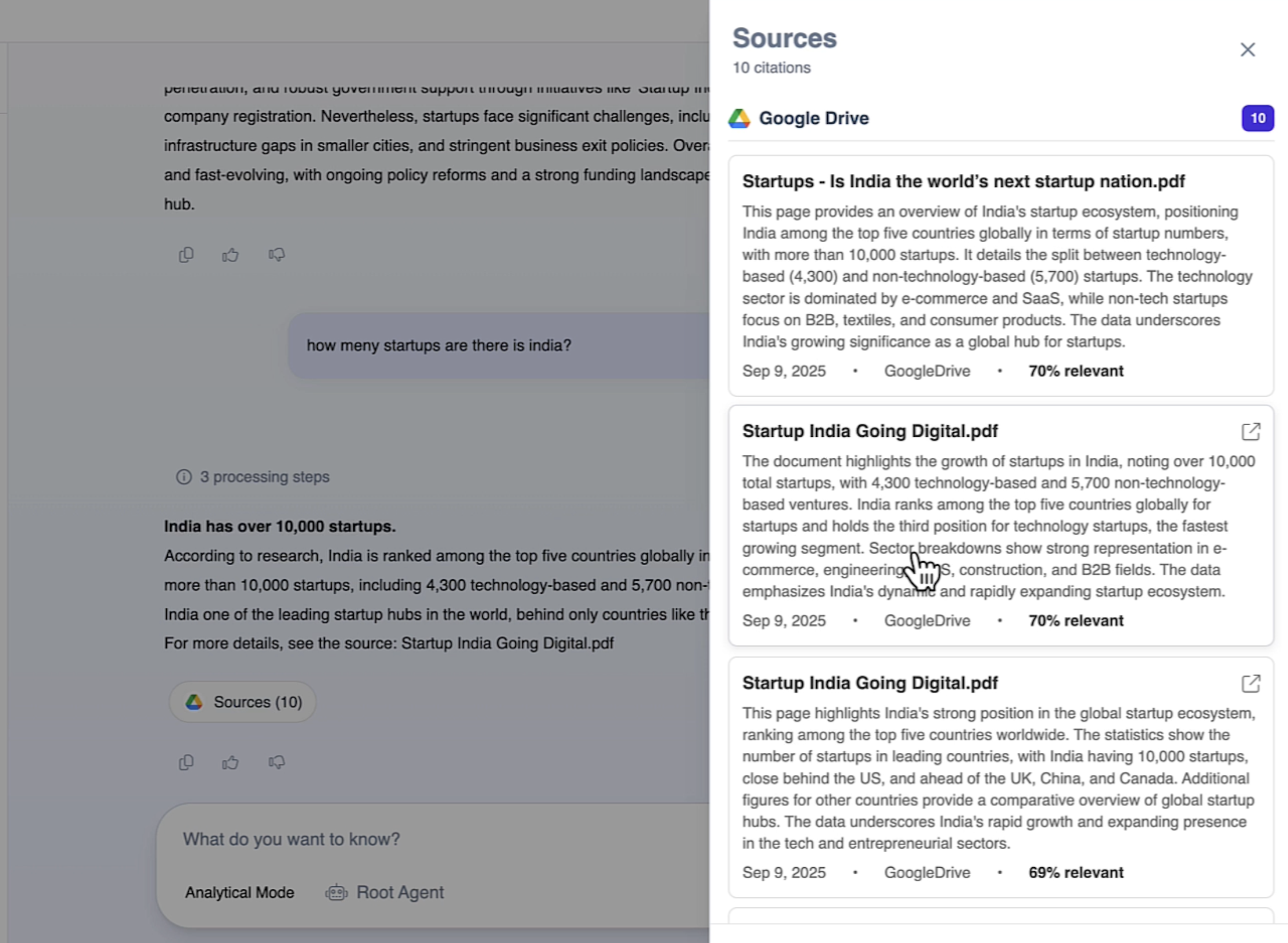Enterprise AI: Build or Buy?
Download Guide
Modern enterprises are drowning in fragmented data. Critical knowledge lives across ERP systems, CRMs, contracts, Slack threads, emails, logs, and dashboards. Each of these systems holds value, but the collective complexity creates a barrier to timely, confident decision-making. IDC estimates that knowledge workers spend 30% of their time searching for information. This is valuable time that could otherwise fuel growth, innovation, and customer impact.
In response, a new category of solutions has emerged: AI-driven enterprise search. At its core, the concept is simple: make it possible for employees to query internal knowledge the same way they search the web. However, while generic AI search tools can provide quick wins, they rarely scale when security, compliance, and custom workflows enter the equation.
For CIOs, technical leaders, and AI strategy teams, the real question isn’t “Do we need AI search?” but rather “Do we need a custom enterprise AI search solution that reflects our unique systems, governance, and outcomes?”
The first challenge for any enterprise AI initiative is trust. Employees must trust that sensitive data will not leak across teams or systems, and leaders must trust that compliance obligations will not be compromised.
Generic AI search tools, while appealing in their “plug-and-play” promise, often ignore this reality. They treat every user the same, with limited connectors and manual setup. They rarely account for the depth of enterprise role-based access controls, where one misplaced permission could expose restricted data.
Custom enterprise AI search, by contrast, integrates directly with existing permission sets across ERP, CRM, DMS, and communication platforms. If a contract is stored in a shared folder but restricted by role, the AI respects those boundaries. This ensures every employee sees exactly what they need to; no more, no less.
This level of precision is not a nice-to-have, as research proves. The 5 Compliance Trends & Priorities 2025 report by Gartner confirms that AI risk management is a top priority for compliance leaders.
Enterprises know that their knowledge assets are valuable, yet they are often locked away in silos. Generic search tools might connect a handful of systems but rarely extend into legacy databases, industry-specific applications, or sprawling unstructured data lakes. The result is a partial view; better than nothing, but far from transformational.
Custom AI search bridges this gap by unifying all business-critical systems, from structured to unstructured, into a single discoverable view. Imagine executives analyzing financial data alongside customer sentiment and regulatory risk in a single query. It’s not a search bar. It’s a new decision-making surface.
Research by McKinsey underscores the impact: breaking down data silos leads to productivity improvements of up to 25%.

The promise of “chat with your enterprise” is appealing, but CIOs know the risks of vague answers and untraceable insights. In heavily regulated industries, such as financial services and life sciences, an AI answer without provenance is flat out unusable.
Generic tools often push this burden onto employees, leaving them to validate outputs manually. Custom AI search flips the model by grounding every response in traceable sources, such as contracts, emails, dashboards, to make sure that insights are fast and auditable.
This ability to anchor every answer to its original source is what builds trust in enterprise AI. Without it, adoption stalls.
In enterprise settings, search is only the beginning. The real opportunity is to transform fragmented knowledge into automated insights that drive action. This is where AI search evolves from a productivity tool into a true intelligence layer for the business.
Generic tools stop at retrieval. They deliver results, but reporting, monitoring, and analysis remain manual and disconnected. Custom enterprise AI search goes further by converting questions into dynamic dashboards, generating reports in organizational templates, and even surfacing risks or opportunities before they escalate.
Finally, there is the question of scale. Enterprises are not static; they evolve through mergers, new applications, and shifting regulatory landscapes. A one-size-fits-all search tool cannot flex with these dynamics.
A truly tailored AI search solution is designed with adaptability in mind. It supports thousands of custom workflows, compliance rules, and bespoke integrations. It adapts as the enterprise grows, ensuring that search remains an asset rather than a liability.
There are scenarios where generic AI search can suffice, but not for enterprises. Small-to-mid-sized companies with limited systems, low compliance burdens, and straightforward use cases may find that an off-the-shelf solution meets their needs. These organizations prioritize simplicity and cost-efficiency; where often “good enough” is, well, good enough.

For large enterprises, the calculus is different. When operating with 5,000+ employees, fragmented data estates, strict compliance demands, and mission-critical workflows, only a custom AI search solution is viable. In these contexts, the stakes are too high for partial integrations, vague outputs, or ignored governance.
The rule of thumb is clear: if your goal is speed and simplicity across a handful of systems, go generic. If your goal is to unlock business-critical knowledge across complex, siloed systems with enterprise-grade governance, go custom.
Speed, security, and scale don’t have to be trade-offs. Our managed enterprise AI platform combines the fast deployment of generic tools with the depth, security, and customization that only custom enterprise AI search can deliver.
Enterprise AI search is no longer optional. It’s becoming a foundation for knowledge-driven organizations. But as enterprises weigh their options, the choice between generic and custom solutions will define the value they unlock.
Generic tools offer speed. Custom enterprise AI search, done right, offers transformation.
At Unframe, we’re building a future where every decision is faster, smarter, and more secure because the right knowledge is always within reach.